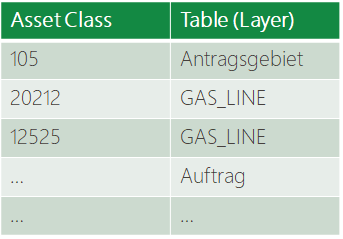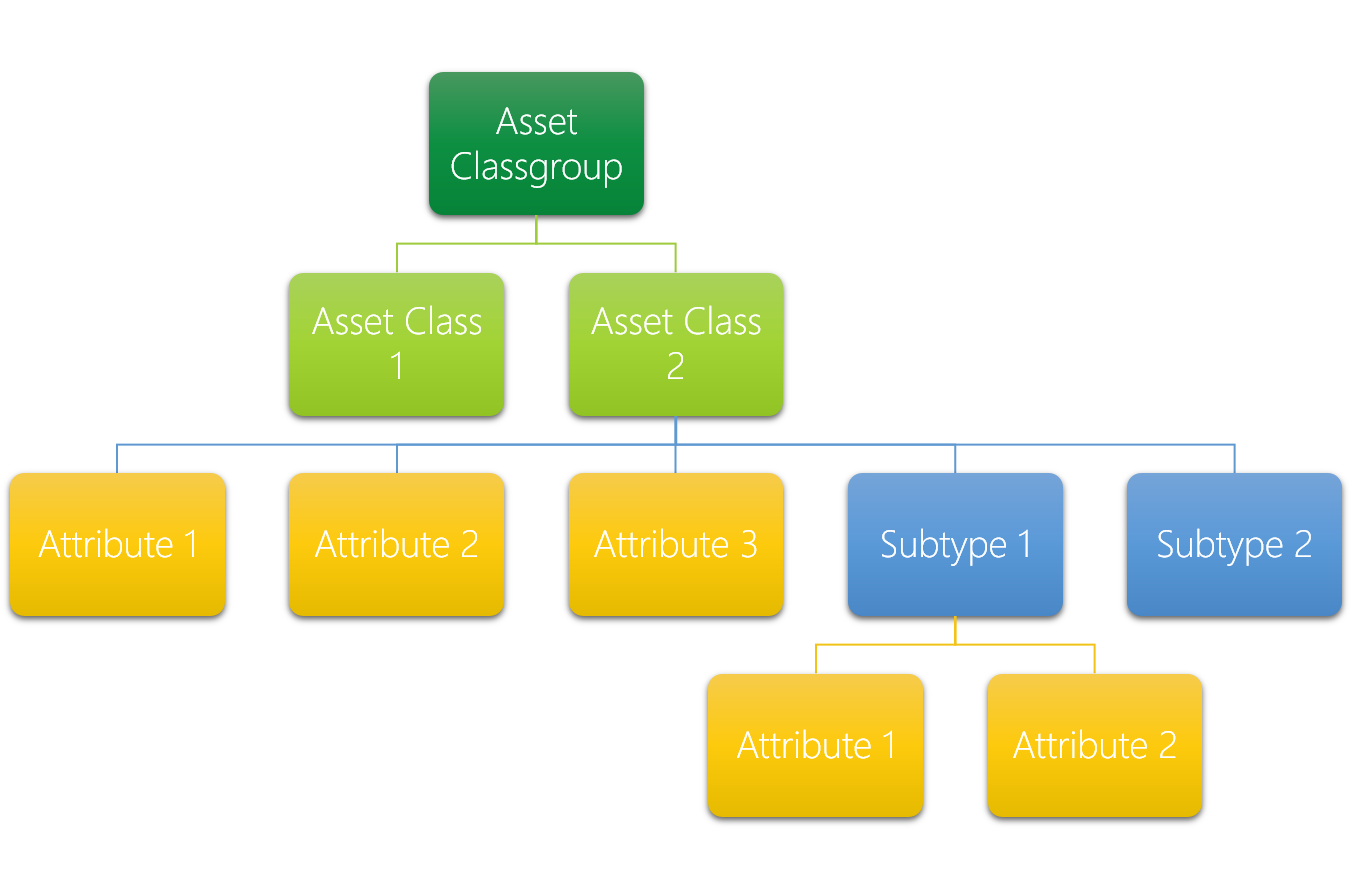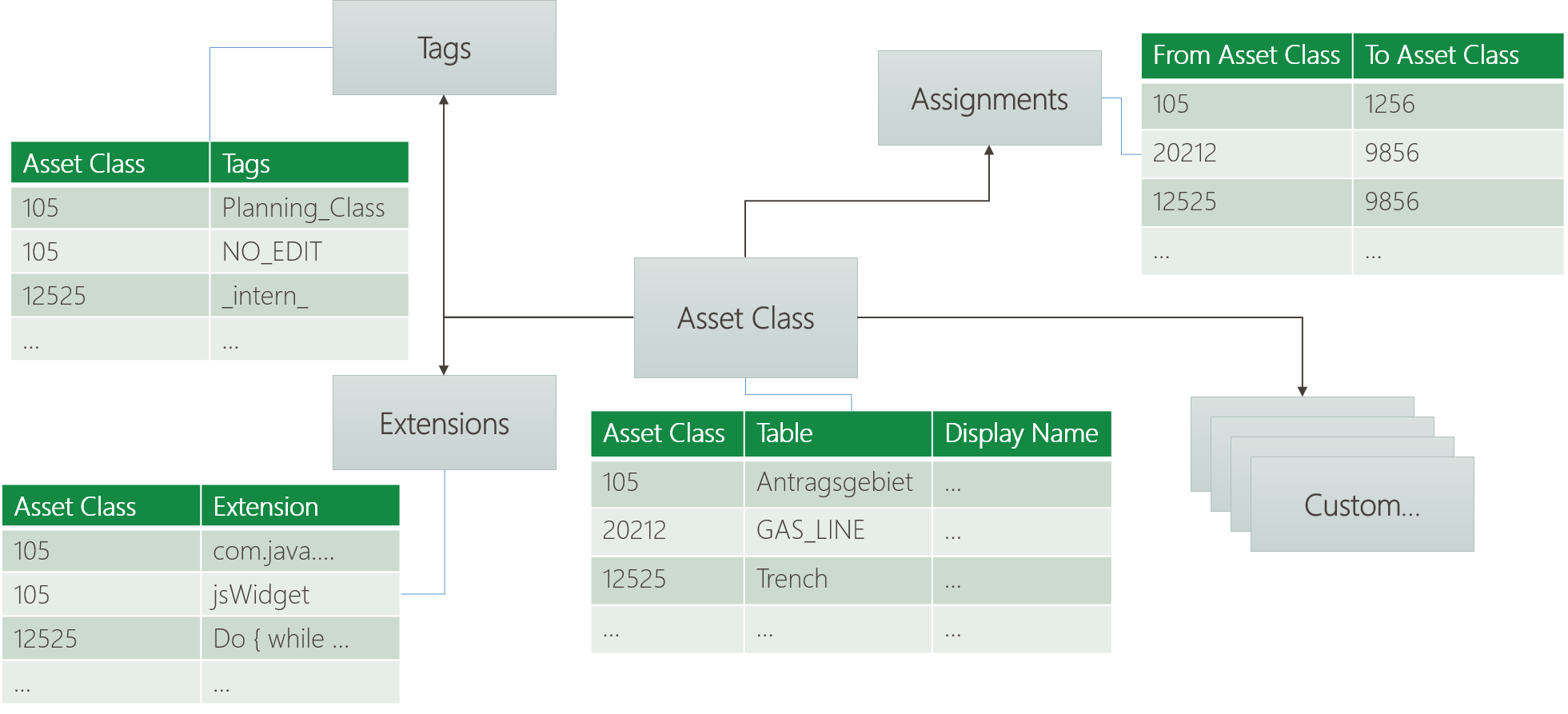VertiGIS business applications use the Asset Information Model for documenting business and asset data. The Asset Information Model is an extension of the Esri Geodatabase Model and allows the introduction and configuration of specific business structures.
From Feature to Asset
An asset is a resource that describes a primary functional or resource object in the underlying business model. Within the GIS, an asset is a wrapper around a feature or object from the geodatabase:

In addition to the regular and project-specific attributes of a feature or object class, an asset has three additional attributes that identify it as belonging to an asset class. These attributes are:
ACLASS_ID |
Key of the corresponding asset class. The key for the corresponding asset class is an integer value that refers to the so-called CLASS_ID of an asset class. All asset classes available in the business model are managed using a unique class key. |
ASSETTYPE |
Key of the corresponding asset subtype. If modeled, asset classes may have dedicated subtypes. In case the associated asset class has corresponding subtypes, this column contains the ID of the asset subtype. If the asset class has no subtypes, this column contains the value -3 or NULL. |
OBJ_ID |
Asset object key. Each asset has a unique object key. The data type of the object key is a GUID and is unique throughout the system. |
Asset Class
Each asset refers to a dedicated asset class. This asset class extends the associated feature or object class with specific aspects of the underlying business application. Each VertiGIS business application based on an Asset Information Model has a catalog of all asset classes configured in the system:

Each asset class refers to a dedicated object class or layer in the underlying GIS. Several asset classes can be configured in one GIS class. Each asset class is identified in the system by a unique key.
Further configurations can be made in the system for each asset class. On the one hand, asset classes can be organized within logical class groups, and on the other hand, asset classes or even their further subtypes can refer to a set of configured attributes that are valid for this asset class or subtype.
 Asset Subtypes
Asset Subtypes
A number of subtypes can be defined for each asset class. All subtypes of an asset class write to the same object class table and inherit their configuration from the associated asset class. Subtypes are used to specify object types in the asset model.
Attributes of an Asset Class
It should be noted that attributes can be defined at the level of an asset class as well as at the level of a specific asset subtype.
Advanced Configuration for Asset Classes
In addition to class groups and attributes, additional configurations such as tags or asset assignments can be stored in the model for an asset class.
